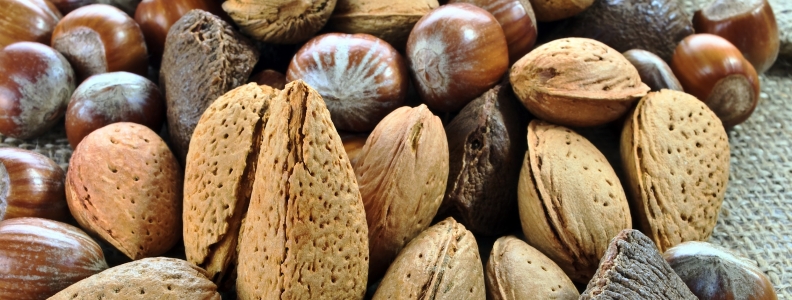There is evidence to suggest that nut trees were grown as a source of human food as early as 10,000 BC, making them one of the earliest crops to be cultivated. Lately, however, nuts have been labelled as ‘fattening’ or, worse still, ‘unhealthy’. I thought it was about time to dispel yet another diet myth and give you the real story on nuts.
1. Nuts Are Power by Protein
Nuts contain high levels of protein. Protein is necessary for the growth, maintenance and repair of body tissue. It also helps the building of cells, hormones and enzymes by providing the amino acids that form the ‘building blocks’ of life. No to mention that protein is also an important energy source for the body. Nuts have high levels of arginine (a type of protein), which helps our insulin work more effectively and contributes to the overall health of our blood vessels and consequently our cardiovascular system.
Protein is a thermogenic nutrient, which means it creates heat as it increases your metabolic rate and energy expenditure. Another benefit of protein is it stimulates your metabolism much more than carbohydrate or fat, which is one of the reasons that high protein diets have become such a weight loss fad over the last five years. So nuts should NOT be avoided if you are on a diet (unless they are coated in chocolate).
2. Nuts Are Loaded With Nutrients
Almonds, pistachios, hazelnuts and brazil nuts are extremely high in calcium. Almonds are rich in some B vitamins and in minerals like potassium, zinc, calcium, magnesium and phosphorus. The Brazil nut is one of the richest vegetable sources of the antioxidant mineral selenium, which is very important for fertility and hormone metabolism. It also helps the thyroid gland to function.
A 50-gram serve of cashew nuts provides 20% of a woman’s daily iron requirement, while 20 fresh cashews provide a man’s daily zinc requirement. Pistachio nuts have good amounts of iron and calcium, making them an excellent addition to the diet of vegetarians.
Peanuts and pistachios provide a good source of B vitamins, which are essential for energy production, protein metabolism and synthesis of red blood cells. Peanuts and hazelnuts are also high in vitamin E.
Nuts are also a great source of fibre, which most Australians are not getting enough of in their diet.
3. Nuts Contain the Good Fats
There is no denying that nuts contain fat, but as you probably know, not all fats are created equal. The kind of fat we want to avoid – the saturated fat found in meat, cheese, and whole milk – can increase our risk of heart disease. However, approximately 90% of the fat in nuts is unsaturated (with a slight variation depending on the type of nut). Unsaturated fats have now been proven to be essential for the health of your heart and cell membranes.
4. Nuts Are Low GI
Glycaemic Index (GI) measures the effect that various carbohydrates have on our blood glucose levels. Carbohydrates with high GI (simple sugars, lollies, processed cakes and sweets, etc) tend to increase blood glucose quickly and have very little satiety value. Foods with a low GI don’t cause such a rapid fluctuation in blood sugar and tend to satisfy hunger and cravings for a much longer period. Carbohydrates with a low GI are a much healthier choice. The good news is that nuts have a low GI.
Just one small handful of nuts every day will not only get you through the snack-attack stage but also help boost your immune system and lower your blood cholesterol levels. Nuts may help reduce the risk of heart disease and other diseases of ageing, and also help prevent osteoporosis.
So go nuts with nuts!

















